My misogyny moment — Why Sarah Hanson-Young finally decided to fight her gender bullies.
It’s part of the cut and thrust and parliament – or is it? Sarah Hanson-Young thought if she ignored the gender bullying, it would stop. They didn’t, until she turned and said enough.
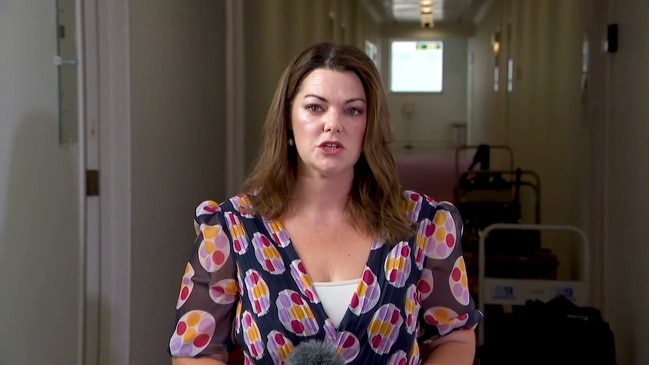
SA Weekend
Don't miss out on the headlines from SA Weekend. Followed categories will be added to My News.
- Hanson-Young wins defamation case against David Leyonhjelm
- Reedem these great rewards with your Advertiser subscription
The tricky thing about being tough is knowing when not to be. Over more than a decade in Canberra, Sarah Hanson-Young cultivated a tough-girl persona, letting sexist slights and insults go unchallenged because to do otherwise would show that they hurt.
That changed last year when a fellow senator, David Leyonhjelm, took Hanson-Young past the point of no return.
Instead of running in another direction, she turned and hit back.
Before then she practised the same response as former Labor Prime Minister Julia Gillard in the toxifying build up to her misogyny speech; she took the high road, ignored the baiters, and hoped they would get sick of it.
Like Gillard before her, Hanson-Young now thinks she was wrong.
“My naivety was that when I did hear things or felt snide comments that were aimed at throwing me off my game, I didn’t call them out,” says Hanson-Young. “Like lots of women when things are said, you just go ‘I’m going to pretend that I didn’t hear that because I don’t want to show that it bothered me’.”
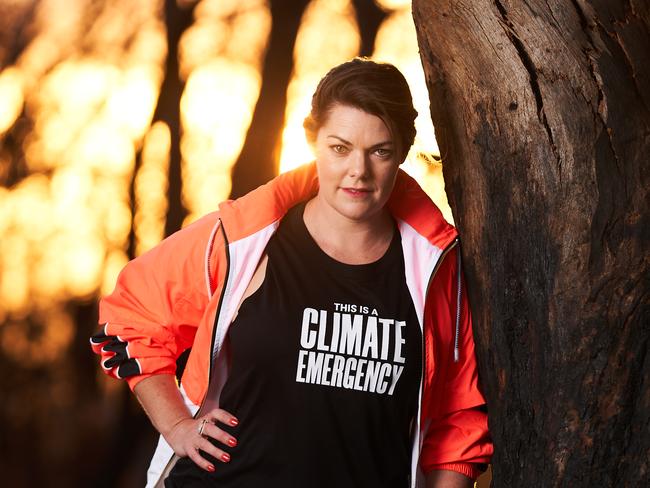
When Hanson-Young became South Australia’s first Greens Senator in 2008, aged 25, she was the youngest person ever popularly elected to the senate and the youngest woman elected to the Australian parliament. She had worked hard to get there, studying anthropology at the University of Adelaide after moving to South Australia from Victoria, then working with Amnesty International during a critical period when the Woomera and Baxter detention centres were open. In 2006 she ran South Australian Green Mark Parnell’s state election campaign and began to get a taste for politics, and a feel for why she should be more involved.
“With Amnesty, my job was to talk to politicians (about the detention centres) and say we needed laws changed, this isn’t right, and they would nod and they would agree and then a week later vote for something terrible,” she says.
“(I started to think) maybe we need to replace some of these people.”
After winning the support of Greens leader Bob Brown she was preselected and ran for the Senate in 2007.
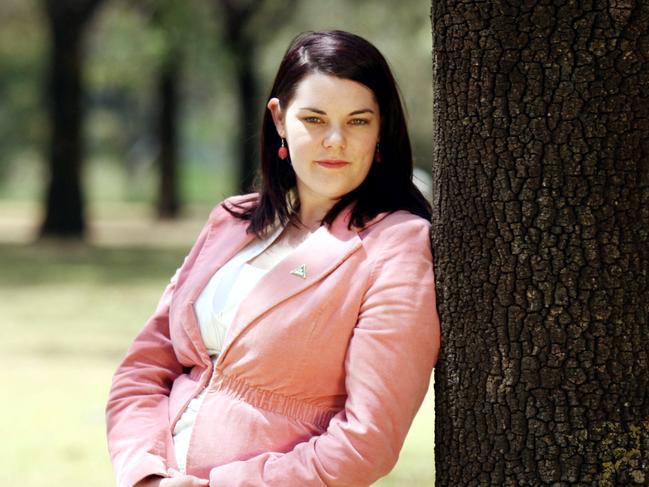
To her surprise she loved campaigning so much she worried what she would do if she lost. She didn’t. She gave her maiden speech on September 1, 2008, young, confident, full of optimism. “May this Spring mark the beginning of a new phase in Australia’s history where fresh ideas and innovation are actively sourced and debated in an attempt to find solutions to our biggest challenge of all, balancing human needs with our finite and fragile environment,” she said.
She wasn’t blind to the attention she might attract and had some regard for what could lie ahead. She was a young woman, the first Green from South Australia, a progressive voice in a young party.
At age 25 she was also married (they later divorced) and discovered she was pregnant with daughter, Kora, the same week she was preselected.
“I remember thinking, ‘OK, how is this going to work?’,” she says. “They were both too good an opportunity. Why should I have to sacrifice one for the other?”
Her first serious gender-based attack came less than a year after she joined the Senate when Kora, then two, was removed from her arms by security, on instructions from the Speaker, and taken away crying in what National Party MP Senator Barnaby Joyce later called a stunt.
The incident triggered a change in the rules but at the time it was distressing.
Of course Hanson-Young had a carer on hand who was about to fly with Kora back to Adelaide but Hanson-Young happened to be holding her daughter outside the chamber doors saying goodbye when the bells rang, signalling a division.
“I knew I didn’t have time to get back up to my office and also … to just dump her! It’s not what you want to do when you’re not going to see her for two or three days,” she says.
“So I just took her in and she was perfectly behaved until the security guards were ordered to come in and take her out of my arms and that’s when she started screaming.”
All this was recorded on the Parliamentary cameras and by the time she got back upstairs, after a vote over banning junk food advertising during children’s television hours, the incident was all over the news.
Not long after, Joyce, who did not attend the vote and wasn’t in the chamber, gave a press conference at which he said the Greens were “a party that is known for its stunts”.
Hanson-Young felt humiliated and her integrity as a parent was under attack.
The rules were subsequently changed and the Senate President, John Hogg, issued a statement saying the rules were confusing and he could have handled the situation better.
The next time she saw Joyce in the Chamber, he put his arm around her and said “no hard feelings”. Only there were.
“I said ‘what are you talking about? You accused me of using my child,’ and he said ‘well you shouldn’t have her here. I have four daughters and in the last 12 months I’ve seen them for seven nights’,” Hanson-Young says. “I said ‘well that makes you the crap parent, not me’. It was quite confronting.”
Low-level sexist jibes continued but in 2012 there was another major incident that left her feeling shattered, but also raised the stakes. Zoo Weekly, the now defunct lad’s magazine, published a doctored photo of Hanson-Young with a story claiming the magazine would house the next boatload of asylum seekers if the Senator agreed to pose in a bikini.
Under the heading Zoo’s Asylum Seeker Bikini Plan, they ran a picture of Hanson-Young’s head photoshopped onto a busty and near-naked bikini-clad body.
The first she heard of it was when someone contacted her office.
“It was gross, I felt sick, at first I think I felt humiliated and then I thought how unfair that was because I hadn’t done anything,” she says. “It was very unsettling.”
She had let other supposedly laddish skits slide, including one on commercial radio using the When Harry Met Sally restaurant scene, involving Hanson-Young, a sandwich and the Parliamentary cafe, Aussies. She was urged by a family memberthis time to sue.
It took three years but Zoo Weekly apologised and settled (it no longer exists).
Looking back, she is glad she did.
“As a mother it is a huge concern that my own daughter can Google my name and find images of my face photo shopped on to the body of a near-naked woman,” Hanson-Young said at the time. “Young women need to see their female leaders taking a stand against sexism. My daughter needs to know I did.”
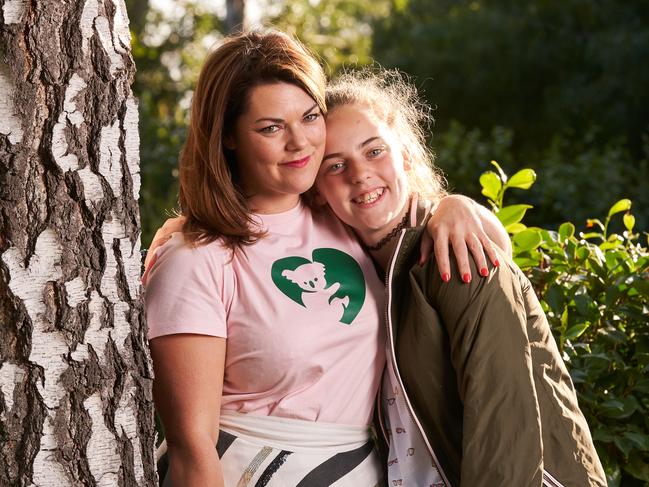
In June 2018 David Leyonhjelm delivered his sexist gibe across the chamber and it became her misogyny moment, the tipping point at which she went into battle against the layers of sexism that coloured so much of the political to and fro. Hanson-Young had already come to the view that the NSW Liberal Democratic Senator, who is no longer in parliament, was one of the bullies that she would eventually have to stand up to.
“At the point that we get to Leyonhjelm, I had been thinking for months beforehand that I had to stand up to some of this and bite down on it but I didn’t know how it would happen or where it would happen,” she says.
“Then when Leyonhjelm said what he did, I knew I had to go and say something to him.”
She went over and asked him ‘did you actually, in the context of a debate about women’s safety, tell me to stop shagging men?’. She wanted to make sure she was not unfairly accusing him before taking it further. He confirmed it was what he said and told her to “fuck off”.
She immediately asked for a direct apology in the chamber but outside of parliament, Leyonhjelm went further.
Over the next day he said on Sky TV and on radio that Hanson-Young was known for having lots of boyfriends, a loaded statement with a nasty imputation. He based his defence on the assertion that Hanson-Young had said – which she hadn’t – that all men were rapists.
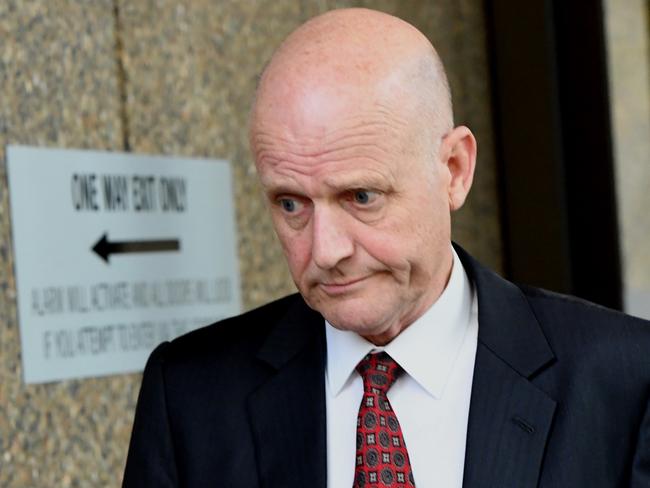
After the initial exchange, Hanson-Young would have settled for a public correction and an apology but now he had gone too far.
“What he did was exactly why most women don’t call these things out, because you get punished for it,” she says.
“This was ‘how dare you!’ For him to go outside the chamber and into the media and say even worse things – it was to intimidate and bully me and shut me up.”
Hanson-Young was in Adelaide, at the launch of the Green’s election campaign in Mayo and on stage with Bob Brown and Major “Moogy” Sumner, when she got a screen shot from a journalist showing what Leyonhjelm was saying outside the House.
On the way to the airport Brown urged her to get legal advice.
She called the lawyer, Rebekah Giles, who represented her in the Zoo Weekly case, and sent a letter to Leyonhjelm telling him to stop.
A huge debate erupted and Hanson-Young’s office was inundated, mainly with support.
“I felt this huge sense of responsibility that people did not want me to just turn a blind eye to this,” she says.
“When I decided to take legal action I did so knowing it was a huge risk, financially, emotionally, we’re in the middle of an election, what does that mean politically?
It’s a big thing to sue someone from your own workplace, particularly when it’s the parliamentary chamber which has never been done before.”
Now she had stopped running she had to endure what came next; mass publicity that implied she was promiscuous and three days on the witness stand.
The latter gave her new respect for victims of sexual abuse and violence who experience much worse.
She tried to protect Kora but it dominated the media day after day.
One day Kora came home from school and told her mother one of her girlfriends had asked her whether it was true that her mother “had lots of boyfriends”.
Taken aback, Hanson-Young asked what she had said. Kora had told her friend it wasn’t true and she shouldn’t say things like that.
“She was so mature about it, so supportive,” Hanson-Young says.
“She said ‘Mum, girls need to be treated properly, you need to stand up to the bullies’.
I really did it for her in a sense. I didn’t want her thinking this could just be brushed under the carpet and it would go away. I had spent 10 years ignoring it and it hadn’t gone away.”
In November last year Hanson-Young won $120,000 damages against Leyonhjelm in what became known as the “slut-shaming” case.
The judge ruled that she had been defamed and that his comments carried the imputation that Hanson-Young was a man-hater (who thought all men were rapists) and a hypocrite. The judge also accepted that Hanson-Young had been damaged by an implication of promiscuity, even though this was not a ground on which she sued.
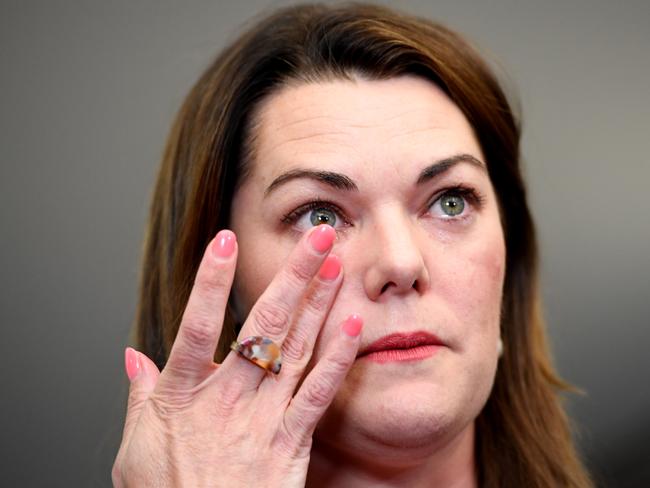
One appalling consequence was a series of calls made to her office by a man making threats if the legal action was not dropped.
After he was arrested, Hanson-Young was shocked to discover the caller was a NSW policeman.
When she told Kora what had happened, she was at pains to do it in such a way that Kora would not fear seeking help from the police if she ever needed to.
“That was a really hard conversation to have,” Hanson-Young says.
While all this was unfolding, Hanson-Young has been fully engaged as a politician at a time when the Greens call for action on climate change moved to the political frontline. In early summer Hanson-Young went to parts of the Adelaide Hills that were burnt in the bushfires before Christmas; then her family’s property near Orbost was burnt out when two separate fires merged into one. It was in a part of East Gippsland that was cool, temperate rainforest and a bushfire there was once inconceivable.
She visited this year and instead of dense green trees and ferns she found burnt sticks poking out of the ground.
“There is one building left standing, which is the hut that Dad built when I was three,” Hanson-Young says.
“My brother and his girlfriend stayed and defended it so the hut was saved but everything else was unrecognisable.”
The Greens message is there must be myriad solutions, not one, and their job, as a minor political force, is to help find the answers.
The party recently went through a change of leadership with former leader Richard Di Natale standing down and being replaced by the Member for Melbourne, Adam Brandt.
Hanson-Young stood for leadership and again missed out but kept the environment portfolio and was last week celebrating the decision by Norwegian oil company, Equinor, to abandon deepwater drilling in the Great Australian Bight Marine Park.
Dealing with climate change and its effects is far more complex.
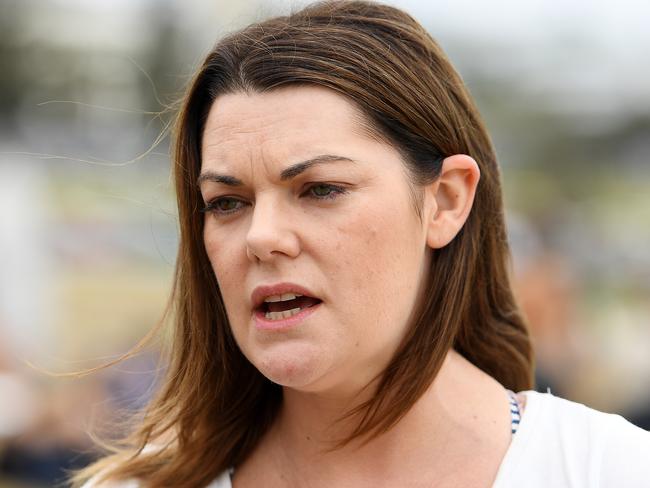
“I think we are very well placed to say, ‘we need a plan to fight climate change’,” Hanson-Young says of The Greens. “After the next election, if The Greens are in the balance of power in the house, which we might be, and in the Senate, we could be helping to forge that pathway very clearly.”
Issues like saving the planet and its wildlife, and securing the future of the River Murray are what the optimistic young senator 12 years ago signed up to fight for.
This, but not the rest. Accepting women as politicians, party leaders, even as Prime Minister, was a giant step but the way they are treated when they get there is a road being paved by women like Gillard and Hanson-Young and before them by Victorian Premier Joan Kirner who was routinely depicted as an overweight housewife in a polka dot dress, and former Australian Democrats Senator Natasha Stott-Despoja who was once asked at a business lunch if she went into politics to meet a husband.
Despite it all, Hanson-Young has no plans to walk away and she has cautious hopes that lessons are being learnt. She has noted a significant change of behaviour in the chamber and trusts it will continue.
“I am very passionate about what I care about. I love politics, I love the parliament, I love debate,” she says. “But I shouldn’t have to put up with underhanded tactics like talking about your body or your sex life or how you dress. Stick to the topic.”
